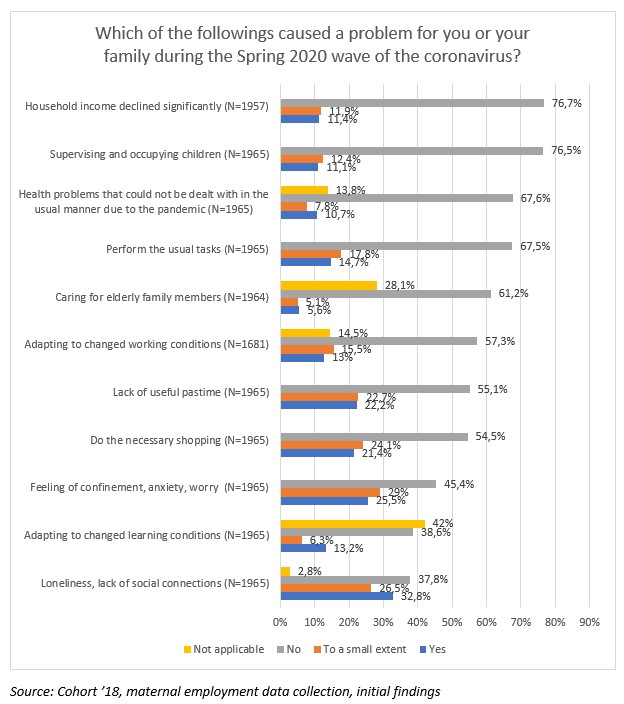The main goal of the telephone survey of the Cohort ’18 study, which started in September 2020, but is still ongoing, is to map the characteristics of maternal employment at the 2-year-old age of their child. In addition, the study also places a great emphasis on findings about the difficulties caused by the pandemic that erupted in 2020; how it has affected certain areas of the lives of participants and their families. During this current data collection, our questions about the coronavirus relate to the emergency period during the first wave of the pandemic, in the Spring of 2020. The present descriptive analysis of preliminary results was based on the responses of the first, more than 2,000 respondents participating in the telephone survey.
Since the outbreak of the coronavirus pandemic in Hungary, a number of measures and restrictions have been introduced, affecting almost all areas of life. Although the majority (84.5%) of mothers (raising young children) in the study did not work actively in the spring of last year, as most were still entitled to maternity allowance at the time being, a number of other factors made it challenging for them to cope with the effects of the virus, which also may have made their daily lives more difficult. For the largest proportion of respondents (32.8%), dealing with loneliness and the lack of social relationships was a clear problem, with a smaller addition of respondents (26.5%) also reporting it as a problem to some extent. Many (54.5%) also mentioned the negative effects of feelings of confinement, anxiety, and concerns about the virus.
Although the majority of respondents seem to have adapted well to restrictive measures, even with their 18-month-old to 2-year-old child (e.g., changed opening hours, protected time zones), for 45.5 percent of respondents essential shopping, and for 32.5% performing routine tasks (e.g., payment of bills) was at least slightly problematic. Adapting to changed learning conditions caused some difficulty for 19.5 percent of respondents and adapting to changed working conditions for 28.5 percent, to at least some degree.

